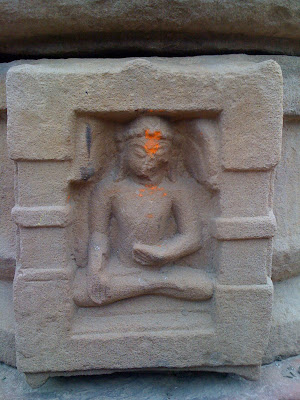make my heart an instrument
"A musician, reincarnated as a translator, moves in with a Tibetan lama . . . "
Friday, February 19, 2010
Wednesday, February 17, 2010

Lately, Genla has been relaxing with some Winter Olympics time at the end of the evening. Last night, he was most interested in the men's figure skating short program.
We sat down in front of the TV with a bowl of chopped fruit and homemade yogurt as the garishly clad young athletes hit the ice.
I must be getting a little self-serious lately.
"Enjoy your life," Genla said, "watch this!"
Friday, February 05, 2010
When you believe in cause and effect, there can be no accidents.
At my Wednesday night Dharma class, we'd been studying meditation according to instruction given by Pabongka Rinpoche in his superlative Liberation in the Palm of Your Hand, a book which I must recommend to absolutely everyone.
Then in December, at Genla's Dharma class at the tiny chinese Tibetan Buddhist Temple in Chinatown, we started the same passages we'd been reviewing on Wednesdays for a few weeks. The first of these includes instruction on the benefits of developing single-pointed concentration. One way to develop this is to try to hold a specific visualized image very clearly in your mind, as if seeing it in a mirror.
Here for instance is Genla's favorite sculpted image of Buddha Shakyamuni, from the museum in Sarnath.
The image you try to hold is supposed to be given to you by your precious Teacher. Very often, it is an image of the Buddha--perhaps one they give to you or show to you. Sometimes--as in mahamudra meditation--you are instructed to pay particular attention to your own stream of consciousness, as if watching it from outside.
In my own meditation, I often vacillate wildly in my visualization, something Pabongka Rinpoche specifically warns against. So on the subway on the way home, I got up the courage to ask Genla for specific instruction:
"Genla, what should I meditate on, while I'm working to develop single-pointed concentration?"
His single-pointed answer: "Garbage!"
I laughed out loud, but inwardly I was shocked. After a long silence, I screwed up my courage again and asked: "As a visualization? I should visualize garbage?"
"Have to visualize garbage. Have to pick up garbage. Every piece of garbage you pick up, you clear an obscuration. You pick up two pieces, even better. No more garbage, no more obscurations. This is called nirvana."
In his Himalayan accent, it sounds even better. Nirvana becomes "neer-wanna."
The subway door ping!-ed open at 14th Street, where we had to walk through the underground tunnel from 6th to 7th Avenue to make our transfer. I followed Genla out of the car and up the stairs to the passageway, pondering what a trash Buddha would look like.
And there, at the top of the stairs, sitting cross-legged on the floor, accepting offerings from passersby, was a homeless man dressed--entirely--in garbage. Literally wearing shreds of newspaper all over his body and on his head, with a billowing skirt of black plastic garbage bags.
What seemed like a thousand Angels paraded by him, disguised as businessmen, handing him, one after another, what seemed like an endless supply of dollar bills.
We walked fifty yards up the passageway before I recovered my composure. I managed to ask Genla, "Did you see him?"
"Who?" he said.
"That man," I replied.
"What did you see?"
"There was a man sitting there, wearing garbage."
"I did not see him," Genla said, not needing to look at me. "I saw a deity."
Thursday, February 04, 2010

A year and a half ago, I was walking out of Naomi Jaffe's matchless yoga class in Brooklyn with my friend Caithlin. Cait said, "Have you heard what's happening in the Congo?" My heart was all opened up, coming from this wonderful yoga class, and when she told me about the devastating large-scale sexual violence that has been going on against women there, I cried.
On that afternoon, I could clearly connect the dots, and intuit how cause and effect hold true in all things. And as Caithlin spoke, I knew, instantly, the ways in which my own internalized misogyny had grown, from even small thoughts of anger and careless acts of desire, and was now contributing to the oppression of women everywhere. In the ugliest of ways.
Later that afternoon I read this article in the New York Times about the situation of women in the Congo. Be forewarned it is explicit.
(Don't think that only women suffer in this kind of epidemic. A later article, equally explicit, explained how the weapon of sexual violence was also being used against men there.)
Some months prior, I'd begun to aspire to change the way I related to all the women I knew--my mother, my sister, my friends, my girlfriend--and moreover to every woman I saw, be it on the street, in yoga class, on the subway, it didn't matter where or in what context. I have hardly always succeeded. But even frequently failing, I've tried my best to be intentional in every interaction. And what I've found is that those actions, loaded with intention, also took root, and then grew and grew.
And then just this afternoon, tucked away at the bottom of the Op Ed page, I saw this totally inspiring piece about Lisa Shannon, a woman about my age who had heard the same stories from the Congo, and similarly resolved to change her life. She has dedicated her entire existence to benefit these people.
Cause and effect are real. So if it's true my previous non-virtuous intentions towards women in some way participated in the oppression of those in the Congo, then it must likewise be true that my resolve to help participates in every effort to help them.
(yay!)
[images from the NYT web site]





